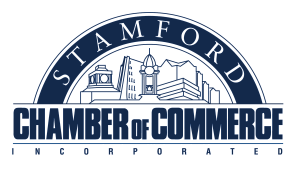Stamford Theft Charges
Theft under Connecticut Law is larceny and a person commits larceny or theft when a person takes something from another person that is not theirs, with the intent of keeping it. Stamford theft charges are serious and can have life-changing consequences which is why it is vital for individuals to get in touch with a qualified theft attorney today.
Elements of Theft Charges
The elements of Stamford theft charges that a prosecutor must prove are:
- Taking property from another person
- Doing it with the knowledge that it is another person’s property
- Doing it with the intention of keeping the other person’s property
Charges Involved in Theft
Cases where somebody is charged with theft or larceny can be accomplished in several different ways.
Stamford theft charges include things like embezzlement, obtaining the property by false pretenses, which is when an individual tricks a person into giving them property and the person thinks it is for a proper reason when it is not, and extortion, which is when somebody forces another person to give them property.
The things that are wrapped into the overall charges of theft or larceny are the different wrongful ways that a person can obtain a third person’s property with the intent of keeping it for themselves.
What is Simple Larceny?
The separate charges included in theft depend on the way in which the theft is committed. The legal term for theft is larceny. There are many ways to commit a larceny, e.g., embezzlement, simple larceny or standard larceny; and identity theft.
Simple/standard larceny is taking another person’s property without authorization. Embezzlement is when the person wrongfully appropriates money or items that are in their care and custody.
Obtaining Property By False Pretense
Obtaining property by false pretense is when a person basically gets an individual’s authorization to convey property to another person but does not completely understand exactly what they are doing, and signs a forged document. Or the individual could sign a legitimate document that would be changed later so that it appears as though the individual is conveying information.
Obtaining property by a false promise and acquiring a property that is lost, mislaid or delivered by mistake acquires property that is clearly not intended for the perpetrator, but they decide to keep it anyway. The person could commit a larceny by extortion which is when the person threatens somebody to give them property.
In this way, the extorted person actually does give the perpetrator the property or money, but only because there was a threat of physical harm or exposing another person in a way that would force them to give the perpetrator the property under those circumstances.
What Does Theft of Services Mean?
One of the other Stamford theft charges is theft of services where the perpetrator contracts with somebody to perform a service, knowing the whole time that they are not going to pay them.
That is not property in the conventional sentence, but it is something that has value. When somebody takes advantage of those services with no intention of paying, that would also be committing a larceny. These are a few examples under Connecticut Law that a larceny may be committed.
Impact of Previous Criminal Convictions
Whether prior criminal convictions affect a person’s Stamford theft charges depends on what the prior criminal convictions are. Any time anyone is charged with anything, having a criminal record is not helpful. Judges and prosecutors are more inclined to punish somebody more severely when they have a long or thorough criminal history.
Enhanced Penalties for Repeat Theft Offenses
The thing that tends to make judges or prosecutors look to punish more severely is when there is a history of criminal activity that seems to be related. In this instance, somebody that has been charged with theft or larceny on a regular basis will be the most damaging to their prospects in a case, whether charged with another larceny or theft charge, because it is looked at as something that is repeated.
It becomes more of a defining element of that person as opposed to something that perhaps can be looked at as if somebody has a criminal history where they have been engaged in different types of criminal behavior. There may be reasons that are explainable for those different instances that they may not be related to the current charge of larceny or theft.
Persistent Larceny Offenders
When someone’s criminal offenses are related to the same types of activity, the judges and prosecutors look at it as somebody that is not realizing the error of their ways. This makes the repeat offender a poor candidate for rehabilitation, and instead, they are more likely to receive punishment.
The other part of it is a specific law that when somebody has been repeatedly convicted of larceny, it enhances the penalties for larceny and creates a new status, which is called a persistent larceny offender or PLO.
A persistent larceny offender is anyone who stands convicted of larceny in the third-degree or larceny in the fourth, fifth, or sixth degrees, and prior to being charge with those larceny charges has been at separate times twice convicted of the crime of larceny in the past. It is like three strikes and a person is in this most severe category. If you face Stamford theft charges, especially as a repeat offender, it is vital that you get in touch with a skilled Stamford theft attorney that will work tirelessly in pursuit of the best possible outcome.












